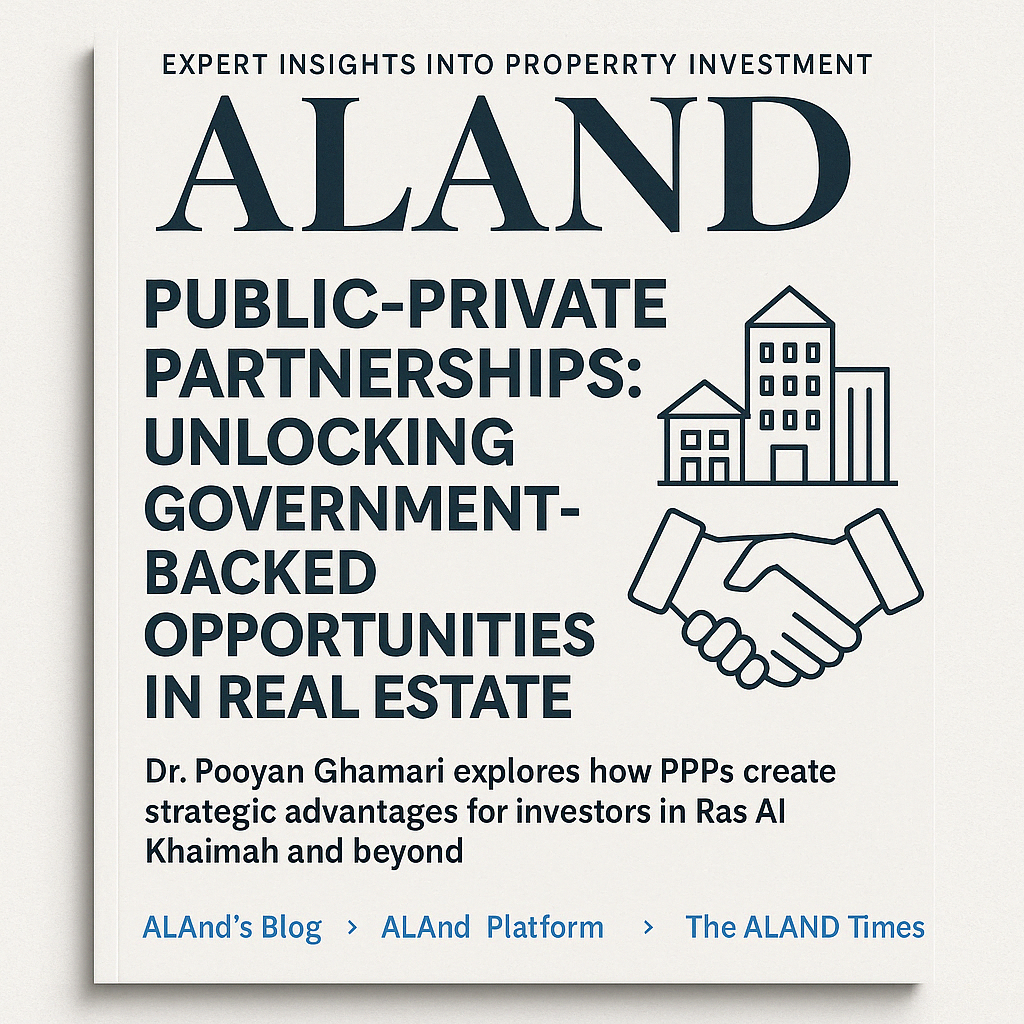Public-Private Partnerships: Unlocking Government-Backed Opportunities in Real Estate
- Published Date: 19th Apr, 2025
-
5★ ★ ★ ★ ★(165)

Public-private partnerships (PPPs) in real estate have become one of the most promising models for investors, developers, and governments alike. These partnerships, where private entities collaborate with the government, unlock a world of opportunities that would otherwise remain out of reach. This article explores how PPPs can revolutionize the real estate market, especially when it comes to large-scale developments, urban regeneration, and the creation of affordable housing.
Expert Perspective: Dr. Pooyan Ghamari
Dr. Pooyan Ghamari, a Swiss economist and founder of ALand, has long been a proponent of PPPs. According to Dr. Ghamari, PPPs provide a unique synergy that allows private companies to leverage government support and financing, while governments benefit from the efficiency and expertise of the private sector. "In a growing economy like Ras Al Khaimah, these partnerships help mitigate risks for private investors, attract international capital, and deliver infrastructure projects that are both financially sustainable and beneficial for the public," he explains.
Strategic Benefits of PPPs in Real Estate
- Access to Government Funding and IncentivesOne of the major advantages of engaging in PPPs in real estate is the access to government funding or incentives. In markets where infrastructure development is crucial but resources are limited, PPPs provide a means for private investors to gain access to public funds, tax breaks, and favorable financing terms.
- Shared Risk and ExpertiseThe collaboration between the public and private sectors allows for a shared risk model. This reduces the financial burden on any single party while increasing the chances of successful project delivery. Moreover, private developers bring their expertise in project management, construction, and design, ensuring that the project is executed efficiently and within the desired timeline.
- Urban Regeneration and Affordable HousingPPPs have been instrumental in urban regeneration projects. Governments often have the vision for developing run-down areas, but they lack the funds to carry out such projects. Private investors, on the other hand, bring capital and innovation to these ventures. The result is a win-win situation where cities are revitalized, and affordable housing options are created for the public.
- Economic Growth and Job CreationThe real estate sector has a significant impact on employment. By engaging in large-scale developments through PPPs, both the private and public sectors stimulate job creation, benefiting local communities. This, in turn, helps improve the standard of living while bolstering the local economy.
Market Trends and Real-World Applications
Across global markets, PPPs are being used to tackle real estate challenges that range from urban expansion to environmental sustainability. For example, the Dubai Creek Harbour development is a result of a public-private partnership between the government of Dubai and private developers. This large-scale mixed-use development is designed to house millions of residents and businesses, integrating residential, commercial, and recreational spaces into a futuristic urban landscape.
In Ras Al Khaimah, PPPs have seen growing success in addressing housing shortages and improving infrastructure. Projects such as the Al Hamra Village demonstrate how public-private collaborations can elevate the region’s development and attract foreign investment.
Actionable Insights for Investors and Developers
- Engage with Local Governments EarlyBuilding strong relationships with local government bodies is key to securing favorable terms in PPP agreements. Understanding government priorities can also help identify areas where funding is available.
- Understand Regulatory FrameworksEach market has its own set of regulations surrounding PPPs. It's crucial for investors and developers to stay informed about these rules to avoid legal pitfalls and to take full advantage of the opportunities available.
- Focus on Long-Term ValuePPPs are often long-term commitments. Investors and developers should focus on the long-term viability of their projects, taking into account factors such as the sustainability of the development, long-term maintenance costs, and social benefits.

